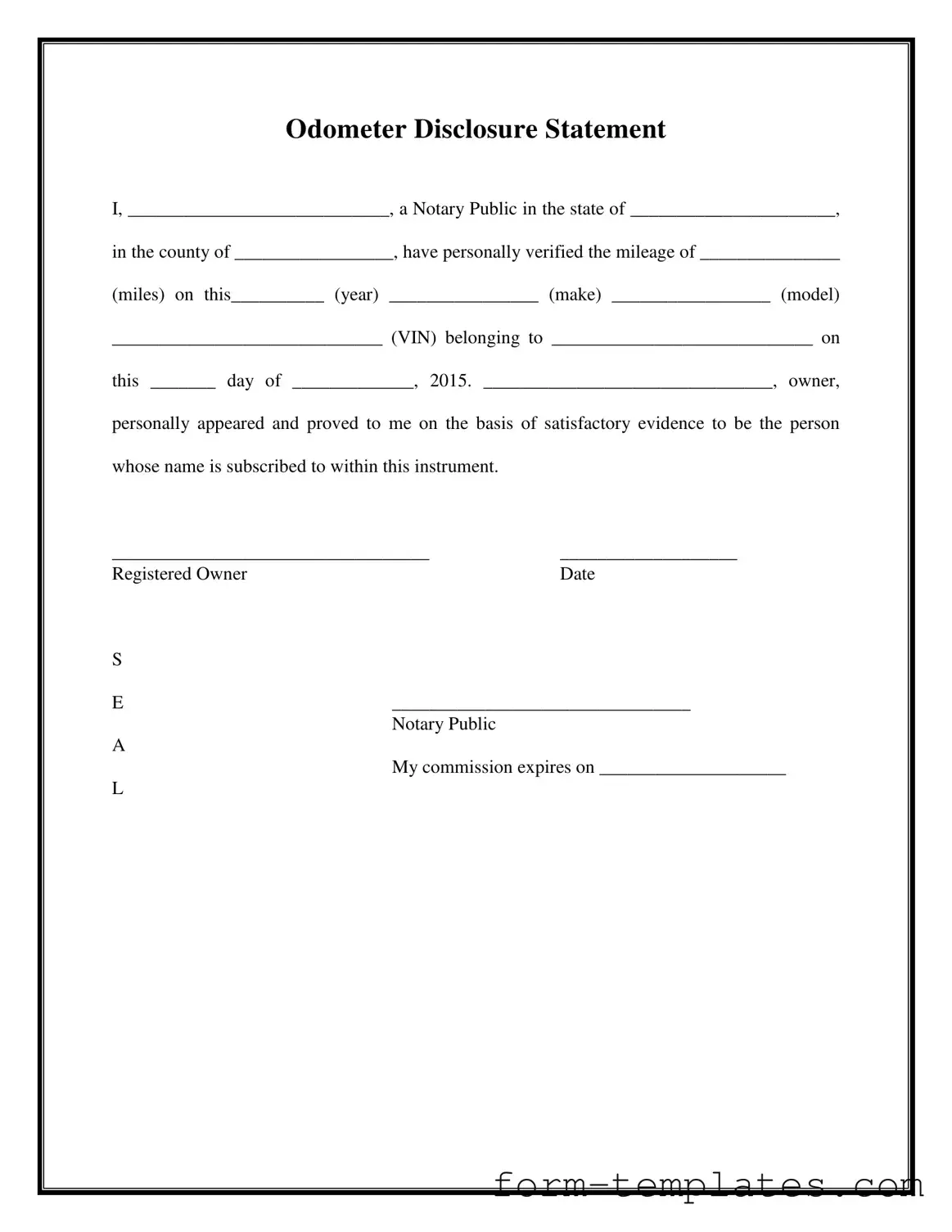Fill Out a Valid Notarized Odometer Statement Template
The Notarized Odometer Statement is a formal document used to confirm the mileage of a vehicle at the time of sale. This statement serves to protect both buyers and sellers by providing a verified record of the vehicle's mileage, ensuring transparency in the transaction. To get started with your own Notarized Odometer Statement, fill out the form by clicking the button below.
Open Your Document Now

